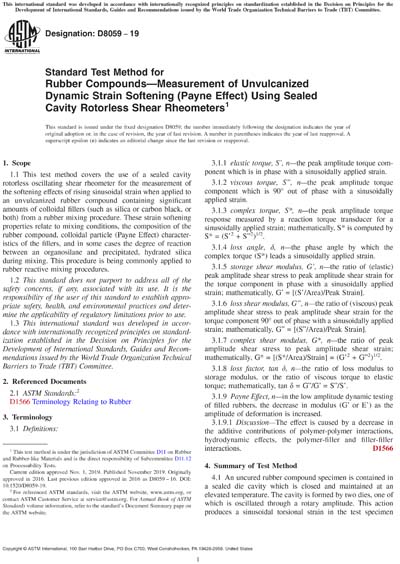Historical
ASTM D8059-19
Standard Test Method for Rubber Compounds—Measurement of Unvulcanized Dynamic Strain Softening (Payne Effect) Using Sealed Cavity Rotorless Shear Rheometers
1.1 This test method covers the use of a sealed cavity rotorless oscillating shear rheometer for the measurement of the softening effects of rising sinusoidal strain when applied to an unvulcanized rubber compound containing significant amounts of colloidal fillers (such as silica or carbon black, or both) from a rubber mixing procedure. These strain softening properties relate to mixing conditions, the composition of the rubber compound, colloidal particle (Payne Effect) characteristics of the fillers, and in some cases the degree of reaction between an organosilane and precipitated, hydrated silica during mixing. This procedure is being commonly applied to rubber reactive mixing procedures.
1.2 This standard does not purport to address all of the safety concerns, if any, associated with its use. It is the responsibility of the user of this standard to establish appropriate safety, health, and environmental practices and determine the applicability of regulatory limitations prior to use.
1.3 This international standard was developed in accordance with internationally recognized principles on standardization established in the Decision on Principles for the Development of International Standards, Guides and Recommendations issued by the World Trade Organization Technical Barriers to Trade (TBT) Committee.
ASTM International [astm]

